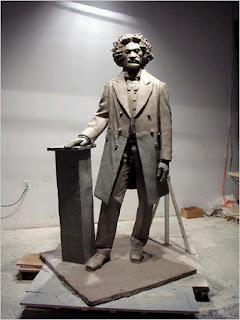Though a Victorian landscape painter heavily influenced by John Ruskin, Albert Goodwin (1845-1932) is the spiritual child of J. M. W. Turner (1775-1851), who painted weather in all of its glorious manifestations.
Born into a working class family in Maidstone, Kent (he was one of nine children and his father was a butler), Goodwin left school to apprentice to a draper. However, young Goodwin was an exceptional artist in his earliest boyhood, and he went to study with Ford Madox Brown and Arthur Hughes.
Goodwin was exhibiting at the Royal Academy when he was only 15, and he became an Associate Member of the Royal Watercolor Society when he was only 21. John Ruskin (1819-1900), one of the most influential art critics and teachers of the time, took him on an extensive European tour, which later translated into many watercolor pictures for Goodwin.
Hardworking and prolific (with over 800 works to his credit), Goodwin was obviously enamored of travel. He trekked through Egypt (1876), India (1895), the West Indies and North America (1902, 1912) and New Zealand (1917). He is considered to be the last of the great Victorian travelling artists, and he used his travels to inspire works in watercolor, but also to add color to his biblical oil paintings and large-scale pictures. Along with Alfred William Hunt, Goodwin was the most successful artist to follow Ruskin’s appeal to synthesize Turner’s atmospherics with Pre-Raphaelite precision.
But though he was influenced by both Turner and the Pre-Raphaelites, Goodwin’s talent and unique personality managed to emerge from the shadows of his famous influencers. There is an almost mystical quality to many of Goodwin’s landscapes … of beauty touched by strangeness. Many of Goodwin’s pictures are of picturesque structures – ruined castles, looming bridges, Gothic spires – reaching out of the clouds of weather or the fog of night. One cannot help but sense vast and different worlds swirling around our heaviest monuments, as if portals to other times and places were all around us. His painting of Westminster, for instance, looks as if that wonderful building were emerging from a rampaging fire; while his Benares seems almost to emerge from the gloom of an opium dream.
The Rain From Heaven, All Souls, Oxford has this dreamlike quality. The church emerges from the clouds and mist, almost hovering before the viewer like a gray illusion. The picture, in watercolor, pencil, and, I believe, a touch of chalk, is a masterwork of economy. The spires are suggested rather than delineated, but these are the suggestions of a gifted minimalist. No information is lost, and a definite sense of place is secured. The faint hint of a greater London in the distance works to ground All Souls in reality, as does the tiny, umbrella-carrying figures in the left foreground. The sun tries to pierce the gloom overhead, as if an appeal from heaven.
It is not that Goodwin has created a picture that is ‘washed out,’ rather, he has created a realistic impression of rain, mist and fog. The gray haze hovering over All Souls (and London beyond) is opaque and heavy with water – in fact, that Goodwin was able to neuter the natural luminosity of watercolor is a sign of his virtuosity. It is a monochromatic masterwork.
One last note – it’s not impossible that the title is a little joke on Goodwin’s part. A profoundly religious man, Goodwin would say that the rain came from heaven (and the heavens, literally), but is he not commenting, too, on the kingdom, or ‘reign,’ of heaven? The more I lose myself in his misty swirls of gray, the less sure I am.













